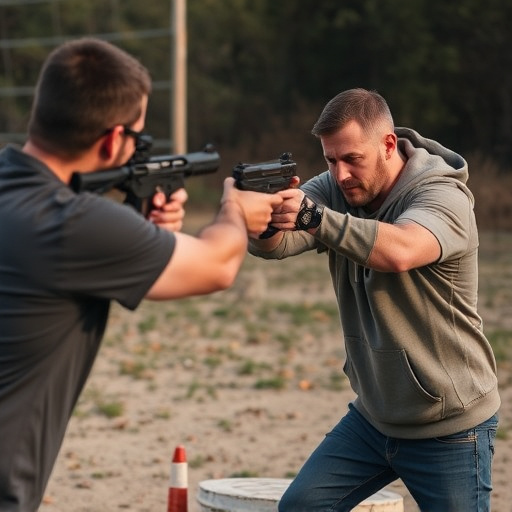Pepper spray defense training focuses on practical techniques for accurate deployment in real-world scenarios. It involves understanding pepper spray types, refining target acquisition skills, and practicing with simulated threats. Regular practice enhances reflexes and prepares individuals to respond calmly during threats. Always consult legal professionals, prioritize safety, and use pepper spray responsibly as a last resort.
“Uncover the power of civilian-grade pepper defense spray—a versatile tool for personal safety. This comprehensive guide breaks down the essentials, from understanding the active ingredients and their effectiveness to practical training techniques for real-world scenarios.
Learn about legal considerations and your rights, ensuring responsible use. Our article provides valuable insights, especially for those seeking Pepper Spray Defense Training Tips, offering a balanced approach to self-defense and peace of mind.”
- Understanding Pepper Spray Basics: Active Ingredients & Effectiveness
- Pepper Spray Defense Training: Techniques for Real-World Scenarios
- Legal Considerations & Responsible Use: Navigating Your Rights & Responsibilities
Understanding Pepper Spray Basics: Active Ingredients & Effectiveness
Pepper spray is a popular self-defense tool known for its ability to temporarily disable an attacker, providing precious time to escape. Understanding its basics—particularly the active ingredients and their effectiveness—is crucial when considering pepper spray as part of your personal defense strategy. The primary active ingredient in most civilian-grade pepper sprays is capsaicin, a chemical derived from chili peppers. This compound irritates the eyes, nose, throat, and skin, leading to temporary blindness, coughing, and difficulty breathing.
When it comes to effectiveness, pepper spray can be highly potent, but its performance varies based on factors like distance, wind, and attacker’s clothing. Proper Pepper Spray Defense Training Tips suggest practicing application techniques in controlled environments to ensure optimal results when needed. Regular training enhances your ability to deploy the spray accurately and effectively, maximising its potential as a deterrent and self-defense tool.
Pepper Spray Defense Training: Techniques for Real-World Scenarios
Pepper spray defense training is more than just learning how to operate a can. It’s about mastering techniques that can be applied in real-world scenarios, enhancing your ability to protect yourself effectively and responsibly. Start by familiarizing yourself with different types of pepper spray and their application methods. Practice target acquisition, ensuring you aim for the eyes, nose, and mouth—sensitive areas that will disable an attacker without causing severe injury.
In training, simulate various situations like close encounters or unexpected attacks to hone your reflexes. Learn how to use one hand while maintaining control, as well as techniques for deploying pepper spray in confined spaces or against multiple aggressors. Regular practice in controlled environments prepares you mentally and physically, empowering you to respond calmly and decisively if faced with a threatening situation. Remember, Pepper Spray Defense Training Tips include staying aware of local laws and always using force only as a last resort.
Legal Considerations & Responsible Use: Navigating Your Rights & Responsibilities
When considering a pepper spray defense, it’s crucial to understand both your rights and responsibilities. Legal considerations vary significantly based on location, so navigating local laws regarding self-defense is essential. Always consult with legal professionals for specific guidance.
Responsible use of pepper spray involves adhering to training tips, such as understanding the range and duration of its effectiveness, proper handling techniques, and awareness of potential adverse effects. Responsible users prioritize safety, ensuring they only deploy pepper spray when absolutely necessary to deter or escape an imminent threat. Regular practice in safe environments can help individuals make informed decisions during critical situations, fostering a culture of self-defense accountability.
Civilian pepper spray defense is a powerful tool for personal safety, but it’s crucial to understand its mechanics and employ effective techniques. By grasping the basics of pepper spray composition and its impact, combined with practical training in various scenarios, individuals can enhance their ability to defend themselves. Additionally, being aware of legal implications and adopting responsible use practices ensures that citizens can exercise their rights while staying within the law. Embracing these Pepper Spray Defense Training Tips equips folks to navigate potentially dangerous situations with greater confidence and safety.
